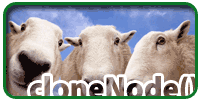Wonderful examples of gobbledegook nominated by The Plain English Campaign
Wednesday, December 14th, 2005Every year the Plain English Campaign nominates publications for being the worst and hardest to understand.
The examples of this year’s winners on the BBC site are a real sight to behold, my favourite being this recipe for involuntarily electrocuting yourself:
6. Poole Lighting Limited for a sheet of instructions – “3. The switched main live is generally a single black wire and this is connected to the brown wire(s) on the fitting. On a wall light this should be a single red wire. The neutral is generally two black wires and these are connected to the blue wire(s). On a wall light this should be a single black wire. The mains earth wire(s) must be connected to all green/yellow wire(s) or earth terminal on the fitting. When completed ensure that there are no bare or loose strands of wire exposed, and cover all exposed areas of terminal blocks with insulation tape.”
Funnily enough I fail to find anything on this publication on the PEC site itself, which is not a good example that you can be usable, accessible and pretty…
 This question pops up almost weekly on message boards, mailing lists and in chat sessions:
This question pops up almost weekly on message boards, mailing lists and in chat sessions:
 I just looked through some of my older scripts and other people’s code and realised that a lot of time we bloat our methods by repeating the same functionality.
I just looked through some of my older scripts and other people’s code and realised that a lot of time we bloat our methods by repeating the same functionality.